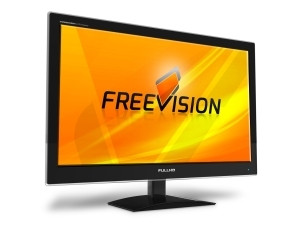
Sentech's free-to-air service Freevision - an overhaul and rebrand of its failed Vivid platform - has been met with an initial nod of approval by its content providers and now has big promises to live up to.
Officially launched yesterday, after being publicised in August, Sentech CEO Setumo Mohapi says Freevision represents the fulfilment of the state-owned signal distributor's "public service mandate" and as such must strive to bring universal access, interoperability digital multimedia and affordable broadcasting signal to SA's citizens.
Having failed to fulfil promises or deliver on its mandate over a decade ago with its Vivid platform, Mohapi says the promises Freevision brings will ultimately change the broadcasting landscape in SA - urban and rural.
Pertinent promises
"We know Vivid, created in 1999, did not deliver what it set out to do. It was not managed well. [Sentech] did not deliver. Today, we put Vivid behind us, and are doing something completely different [with Freevision]."
When Freevision was first announced, says Mohapi, Sentech promised a unique design that will enable proper use of public funding and offer broadcasters the lowest possible cost. "This is the bedrock of Freevision. Multichannel broadcasting - which characterises the way the world is going - cannot survive without us making input with affordable tariffs."
Touted as a "gap-filler" while SA awaits the eventual rollout of digital terrestrial television (DTT), he says Freevision is a spinoff of the broadcasting digital migration (BDM) policy. "We are ourselves for the eventuality of DTT. The BDM provides for the establishment of a universal access direct to home satellite service to ensure public broadcasting services will reach 100% of the population at the time of analogue switch-off.
"With this launch we are putting a seed in the ground and this can be bigger. It is inevitable where we are going - it is now about the pace," says Mohapi.
He says Sentech "will not pursue a cent from marketing" - rather the brands will be independently managed by the broadcasters.
Enabling the masses
CEO of state-owned broadcaster SABC Lulama Mokhobo says Freevision represents a "massive game-changer". She says it will lead to "a different broadcasting landscape from what we thought we would have with DTT".
Mokhobo says Sentech's free-to-air platform will help the SABC tick of the boxes in line with its ultimate plan of universal access. "We cannot afford three million people not being able to access SABC."
She says the platform also assuages concerns of SA's people not knowing the political leaders they will be voting for in next year's elections. "Thank you [Sentech] for making this possible and for deepening democracy.
"It is our job to make sure every citizen is able to make an informed decision and we haven't been able to fulfil that obligation."
Marcel Golding, CEO of SA's first private commercial free-to-air broadcaster etv, says it is ironic SA is celebrating the launch of a DTT gap-filler even before DTT has been launched. That said, Golding notes the launch of Freevision is "still an important step in the road to getting there".
He says he does not see etv as competing with Freevision. "It is about the survival of free-to-air broadcasting. We have ended up in an anomalous situation where quality multichannel content is only available to those with money."
Golding says it is wrong that the most basic source of TV has become dominated by subscription-based services. "Five years ago, we saw 87% free-to-air viewing - a figure that has today declined to 68% - and it is projected that this will fall to 50% by the end of the decade. This means more people will flock to pay-TV, to the detriment of free-to-air channels that rely solely on advertising."
He puts the grim scenario down to the "absence of effective regulation on pay-TV, combined with the unassailable growth [of SA's] pay-TV player".
Golding says SA's government and broadcasting sector needs to work together to make brave decisions to reverse the decline - and eventual demise - of free-to-air broadcasters.
What about DTT?
Kate Skinner from the SOS coalition, which aims to support public broadcasting, says the fact that satellite services are filling the gap that has been created by the delays in launching DTT leaves a question mark hanging over the digital migration process.
"The big issue government needs to think about and we need to keep an eye on is where the rise of satellite offerings like Freevision and OpenView leave DTT.
"The impact of these services on digital migration cannot be known now, but it is something to consider. That is not to say the launch of Freevision should not be welcomed - it is great that people have another option while DTT lags, but what will the incentive be for people to buy into DTT when they have a stack of other options open to them?"
Share